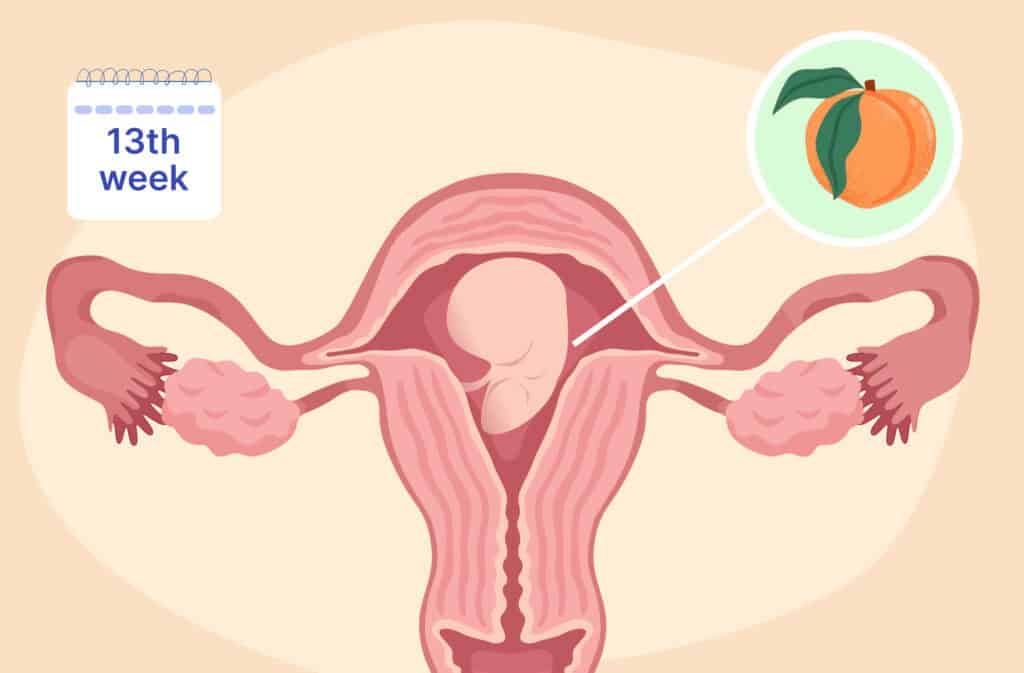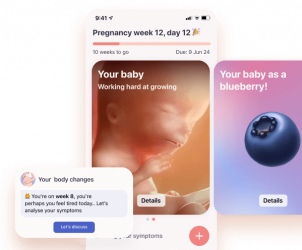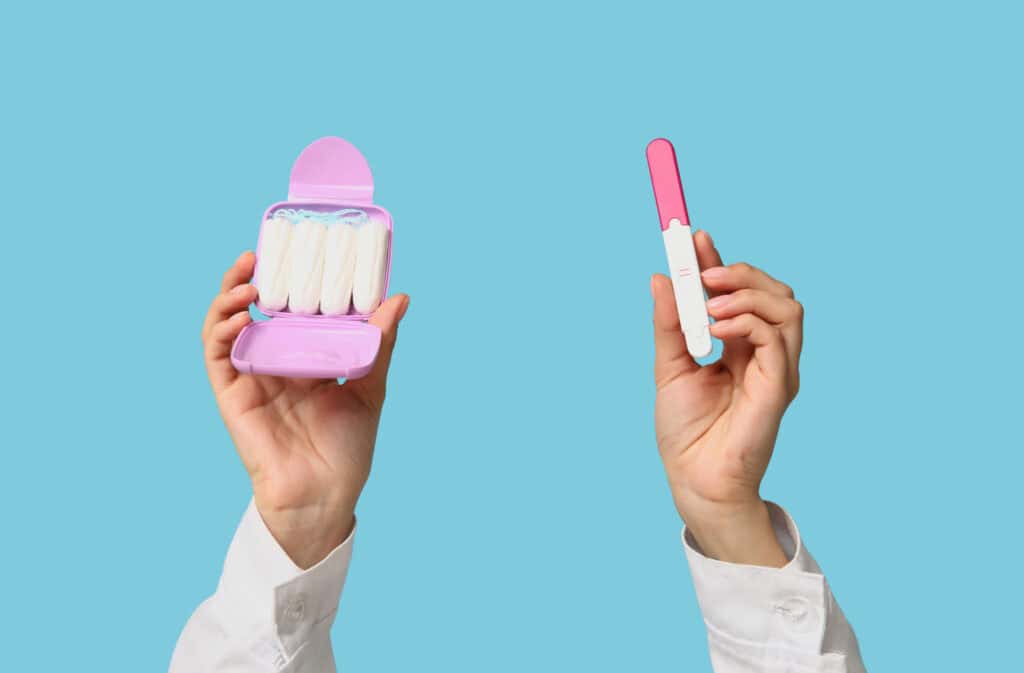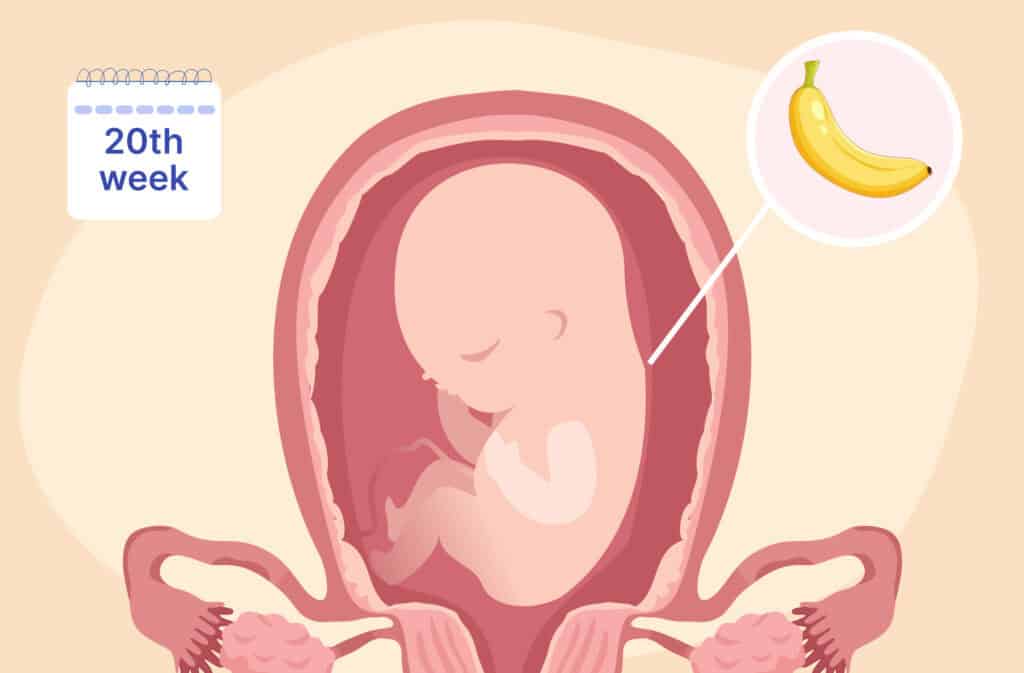Femia > Health Library > Pregnancy > Pregnancy week by week > Week 13 pregnancy: Fetal development, new symptoms, and bump progress
Week 13 pregnancy: Fetal development, new symptoms, and bump progress

- Updated Feb 27, 2025
- Published
CRAFTED BY HUMAN
Crafted by human At Femia, we provide accurate and up-to-date information at every stage of your journey, from trying to conceive, pregnancy and postnatal support. All content is created by a real person based on in-depth research and own professional experience. Femia ensures that you will receive expert advice, strict accuracy and a personalized approach from our authors/medical experts. Learn more about our editorial policy.
FACT CHECKED
Fact checked At Femia Health, we maintain the highest standards of editorial excellence in delivering content focused on helping you conceive, guiding you through pregnancy, and supporting you postpartum. Explore our content review principles to learn how we ensure the accuracy and quality of our health and lifestyle tips for every stage of your journey.
At 13 weeks pregnant, your baby is growing quickly and developing distinct features. You may start to notice a small bump, and symptoms like fatigue and nausea may begin to ease. This week marks the start of the second trimester.
Congratulations on reaching 13 weeks pregnant! This week, you’re officially entering the second trimester, a stage often called the “honeymoon phase” of pregnancy, as many women start feeling more energized and experience reduced nausea. Let’s dive into what’s happening with your baby, the changes you might notice in your body, and what to expect as you journey through week 13.

13-week pregnancy symptoms
As you enter the second trimester, some early symptoms may begin to lessen while others emerge. Here’s what you may experience at 13 weeks:
Cramping
Mild cramping is quite common in pregnancy, often caused by gas, bloating, or the stretching of ligaments. Moving around gently, taking a warm bath, drinking fluids, or resting can help alleviate discomfort. However, if the cramping persists despite rest, or is accompanied by severe pain, upper abdominal sensitivity, fever, or dizziness, it’s important to contact your healthcare provider as it could signal a more serious issue.
Increased appetite
If you’ve experienced nausea or food aversions, you might begin to notice your appetite returning as you move into the second trimester. Cravings may also become more prominent at this stage. While some believe cravings reflect a need for specific nutrients, it’s often unclear why they occur, though many women embrace them as a normal part of pregnancy.
Nasal congestion
You may find yourself dealing with a stuffy nose, a common symptom for about one-third of pregnant women. Hormonal changes and increased blood volume can cause this congestion. However, if you have additional symptoms like fever, sore throat, or coughing, it could be a cold or infection, and it’s best to consult your doctor about safe remedies.
Visible veins
As your blood volume increases during pregnancy, you may notice more visible veins, especially across your chest, breasts, and abdomen. These veins may become more prominent, and some women develop varicose veins in their legs. Fortunately, most of these changes diminish or completely disappear after delivery.
Vaginal discharge
It’s normal to experience more vaginal discharge during pregnancy due to increased estrogen levels. Healthy discharge should be milky white or odorless. However, if your discharge changes to gray, yellow, or green, or is accompanied by pain or itching, it could indicate an infection, and you should contact your healthcare provider for further evaluation.
Heartburn
Hormonal shifts and physical changes during pregnancy can lead to heartburn, causing discomfort between your chest and throat. To manage heartburn, try avoiding spicy or acidic foods, eat smaller meals, and chew gum to help neutralize stomach acids. If these measures don’t help, consult your provider for safe treatment options during pregnancy.
👉Find out more: Entering week 12: Baby development, belly changes, and pregnancy care tips
Your body at 13 weeks pregnant
By week 13, your uterus has expanded significantly, and you may begin to notice a more pronounced baby bump, especially if it’s your first pregnancy. As your uterus grows, it starts to push against the abdominal muscles, which might result in some mild cramping or discomfort. You might also notice your energy levels returning to a more normal range, as the hormonal changes responsible for early pregnancy fatigue start to stabilize.
With hormone levels adjusting, many women experience a reduction in the nausea and vomiting that characterized the first trimester. This is also the point at which appetite often starts to increase, as your body begins to require more calories to support the growing baby. As your body continues to adjust to pregnancy, maintaining a balanced diet, staying hydrated, and getting plenty of rest are key to supporting both your health and the baby’s development.
13-week baby bump
A 13-week bump can vary widely based on body type, muscle tone, and whether this is your first pregnancy. Some women may have a subtle bump by now, while others may not show for a few more weeks. Embrace the changes as they come, knowing that each body is unique.
Baby development at 13 weeks pregnancy
At 13 weeks, your baby’s organs and body systems are in place and continue to grow and develop. The baby’s facial features are becoming more distinct, with a tiny nose, lips, and even eyelids starting to take shape. The intestines are moving into the abdomen, and the vocal cords are beginning to form. Your baby is also moving more frequently, though these movements are still too faint to feel.
- Your baby can pee! At this stage, your baby has started swallowing amniotic fluid and excreting urine, recycling the full volume of fluid every few hours. This marks an important step in the development of their kidneys and bladder, helping with the regulation of fluid balance.
- Producing meconium. As your baby swallows amniotic fluid, they also produce meconium, a dark, sticky substance that accumulates in the intestines. This will be your baby’s first stool, typically passed shortly after birth, signaling that the digestive system is functioning.
- Teeth and bones. Your baby’s bones are starting to harden, especially the longer bones and the skull. At the same time, your baby’s teeth are forming beneath the gums, and overall bone density is increasing, further developing the skeletal structure for life outside the womb.
13-week baby size
The 13-week fetus size is around 3 inches long and weighs approximately 0.8 ounces—about the size of a peach. As your baby continues to grow, limbs are lengthening, and bones are strengthening.
13-week ultrasound
A 13-week ultrasound can reveal incredible details, such as the baby’s head, arms, legs, and even tiny fingers and toes. A 13-week ultrasound 3D scan can provide a more detailed view, where you may observe facial structures and small body movements. At this stage, you may begin to see the baby’s unique features, but it’s still early for a definitive gender reveal.
Actual 13-week fetus
A real-life 13-week fetus resembles a miniature newborn, with recognizable arms, legs, and a defined face. The skin is still translucent, and although movement is frequent, it remains too light for you to feel.

13 weeks pregnant: Second-trimester tests to expect
- Sequential screening
Sequential screening is a two-part test to assess the risk of genetic abnormalities and neural tube defects:
- Part 1 (first trimester): A blood test (PAPP-A and free beta-hCG) and a nuchal translucency ultrasound to estimate risks for Down syndrome (Trisomy 21) and Edwards syndrome (Trisomy 18).
- Part 2 (second trimester): Between 15–22 weeks, a quad screen measures AFP, hCG, estriol, and inhibin-A, providing a more complete risk assessment.
This non-invasive test helps identify pregnancies at higher risk, but it doesn’t provide a definitive diagnosis. Further tests like amniocentesis or CVS may be recommended for high-risk cases.
- Basic blood and urine screening
Regular screenings help identify conditions like anemia, gestational diabetes, and infections early, reducing risks for both mother and baby.
- Blood Screening:
- Hemoglobin and hematocrit levels: Check for anemia.
- Blood type and Rh factor: Assess Rh incompatibility risks.
- Infections: Tests for HIV, syphilis, and hepatitis B to prevent transmission.
- Urine Screening:
- Protein: Elevated levels can indicate UTIs or preeclampsia.
- Glucose: High levels may suggest gestational diabetes.
- Infection indicators: Leukocytes or nitrites indicate UTIs.
- Ketones: May indicate dehydration or inadequate intake.
👉Find out more:
14 weeks pregnant: Baby’s size, bump beginnings, and self-care tips
15 weeks pregnant: Baby’s growth, bump progress, and what to expect
Health tips and self-care at 13 weeks pregnant
Focus on a balanced diet
At 13 weeks, your body requires a variety of nutrients to support both your baby’s growth and your own health. Include lean proteins, whole grains, fruits, and vegetables to provide a range of essential vitamins and minerals. Don’t forget to add healthy fats from sources like avocados, nuts, and olive oil, which are important for fetal development.
Stay hydrated
Drinking plenty of water is crucial for both you and your baby. Hydration helps support the increased blood volume during pregnancy, aids digestion, and keeps your energy levels up. Carry a water bottle with you and aim to drink water throughout the day to stay properly hydrated.
Gentle exercise
As your pregnancy progresses, gentle exercises like walking, swimming, or prenatal yoga can help keep you active and reduce common pregnancy discomforts such as back pain or swelling. These exercises can improve circulation, boost your mood, and enhance your overall well-being. Always listen to your body and rest if you feel any discomfort.
Prioritize rest and sleep
Your body is working hard to support your growing baby, so getting enough sleep is essential. Aim for 7-9 hours of quality sleep each night and take naps when you can. If you’re having trouble sleeping, try using pillows for support, sleeping on your left side, and avoiding caffeine late in the day.
Wear comfortable clothing
As your body changes, comfort becomes key. Opt for loose or maternity clothes that allow for movement and avoid any pressure on your abdomen. Comfortable shoes are also important, especially as your feet may swell or feel more tired during pregnancy.
Mental well-being
As your hormones stabilize in the second trimester, it’s a great time to focus on your mental well-being. Take time to relax, practice mindfulness, or engage in activities that bring you joy. Talk to your partner, friends, or a therapist about any emotions or concerns you may have, and remember, it’s normal to feel a mix of excitement and nervousness at this stage.
Questions from the Femia community
When will I experience the first kick?
Most women feel the first fetal movements, known as “quickening,” between 16 and 25 weeks, though it may happen earlier in subsequent pregnancies.
What is the frequency of ultrasounds?
Typically, ultrasounds are performed around 8-12 weeks, 18-20 weeks, and later if needed. The frequency may vary based on your healthcare provider and specific health needs.
How can I manage headaches at 13 weeks?
Staying hydrated, getting enough rest, and managing stress can help reduce headaches. Avoid caffeine and consult your provider if headaches persist.
Is 13 weeks considered 4 months pregnant?
Yes, 13 weeks is generally considered to be the start of the 4th month of pregnancy. Pregnancy is often divided into three trimesters, with each trimester lasting about 12-14 weeks.
The bottom line
At 13 weeks pregnant, your baby is growing rapidly, with organs forming and bones strengthening. You may notice a slight bump as your uterus expands, and symptoms like nausea and fatigue may begin to ease. Focus on balanced nutrition, hydration, and light activity to support your body and baby as you progress through the second trimester.
References
- “13 Weeks Pregnant: Symptoms, Baby Development & Tips.” BabyCenter, www.babycenter.com/pregnancy/week-by-week/13-weeks-pregnant.
- “Week 13 of Pregnancy: Symptoms, Baby Development & More.” What to Expect, www.whattoexpect.com/pregnancy/week-by-week/week-13.aspx.
- “13 Weeks Pregnant: Baby Development, Symptoms & Tips.” NHS, www.nhs.uk/pregnancy/week-by-week/1-to-12/13-weeks/.
- “Pregnancy Week 13: What to Expect.” American Pregnancy Association, www.americanpregnancy.org/healthy-pregnancy/week-by-week/13-weeks-pregnant/.

Learn to distinguish between PMS and early pregnancy symptoms. Discover key differences in breast tenderness, cramping, mood changes, and more. Expert insights from Femia.

Can you take antidepressants while pregnant? Find an all-encompassing guide to antidepressants and pregnancy with risks, tips, safe options, and more.

At 20 weeks pregnant, you’re halfway through your journey, with your baby growing quickly. Discover what to expect, symptoms, and self-care tips for week 20.

